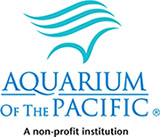Forum Summary
On October 4 and 5, 2018, the Aquarium of the Pacific’s Seafood for the Future program and American Honda, in partnership with the Honda Marine Science Foundation, convened and facilitated a forum, titled: Aligning Stakeholder Communications for U.S. Marine Aquaculture at the Aquarium of the Pacific. The forum’s goal was to expand responsible marine aquaculture, or farming in the sea, in the U.S. by facilitating the communication of accurate information to consumers, regulators, policymakers, and the public. The output will be a communications strategy to facilitate more cohesive and accurate messaging about U.S. marine aquaculture in state and federal waters among diverse stakeholder groups.
The full summary report can be found here: Aquaculture_Comms_Forum_report_Final_v4.pdf
Forum participants
U.S. marine aquaculture farmers, chefs, communications experts, regulators (state and federal), educators, students, scientists, representatives from farms seeking permits, seafood suppliers, and others.
Key Themes
Finding markets for U.S. marine aquaculture products from existing farms is not the issue…permitting new sites and expanding responsible farms in the U.S. is. The public can greatly influence regulators and policymakers. Public pressure driven by negative perceptions can make the permitting process very expensive and difficult, thereby discouraging many farmers from entering the process.
It’s not about farmed vs. wild. It’s about U.S. seafood. More people need to eat seafood to support an environmentally responsible food supply. Despite the many nutritional and environmental benefits of seafood, Americans only eat about 15 pounds of seafood versus 60 pounds of beef per year. We should be working together to raise the profile of U.S. seafood.
We need to strategize and collaborate to identify and approach various target audiences with engaging and informative communications.
Building and maintaining relationships and strengthening communication among all stakeholder groups is important. We need to identify and define cohesive political, public, and consumer-facing messaging that targets these diverse audiences.
Sharing stories and developing strong and compelling narratives are important. We need to do a better job of telling farmers’ stories and describing the important role responsible marine aquaculture plays in the nation’s food supply. We also need to develop strong narratives to support strategies designed to approach specific audiences and accomplish specific communication goals in regards to all types of responsible marine aquaculture.
We need to pool and share resources (images, video, fact sheets, etc.) to help amplify stories and accurate information about responsible marine aquaculture across diverse networks.
It is important to understand and strategize as a community when to engage and when not to engage with marine aquaculture detractors.
Action Items and Next Steps
In response to the key themes identified in day 1, participants from day 2 (a smaller cross-section of participants representing the various stakeholder groups gathered on day 1) recommended separate working groups to draft specific strategies for general communications, legislative and policy outreach, and strategic alliances. Seafood for the Future will coordinate and facilitate the working groups to support the development of the drafts and ensure there is follow up with the broader community to review and execute the strategies.
- Draft strategies from all three groups should be completed and ready for review by end of the first quarter of 2019. They will be presented to colleagues at
Aquaculture Triennial and Seafood Expo North America Conferences in 2019.
- The Communication and Policy toolkits will be available by June 2019.
- Aquarium of the Pacific will work with University of Southern California (USC) Sea Grant to develop some tools and resources for educators to incorporate marine
aquaculture.







